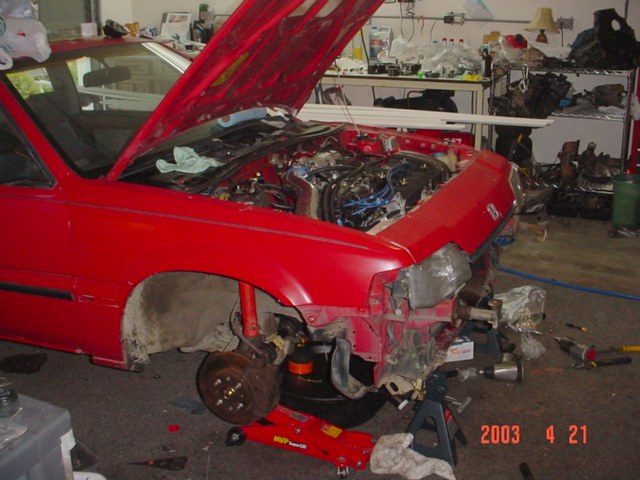
The D16A1 looks pretty at home in the CRX engine bay. Maybe that's because the Japanese version (known as the "ZC") came as standard equipment in the Japanese 1st gen CRX. They get all the nice toys!
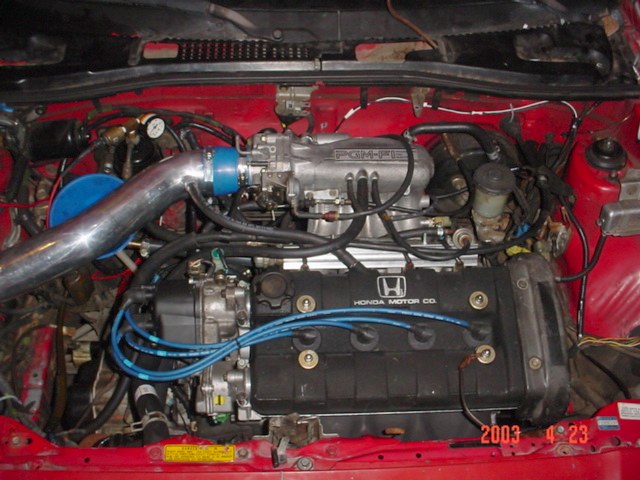
This picture shows my bling bling intake along with the Moroso oil catch can. The catch can sits between the crankcase breather and the intake manifold. A PCV valve sits on top of the catch can. This is a closed-loop emissions-legal setup that greatly reduces detonating-causing oil entering the intake manifold. Thanks to Larry at Endyn for providing the diagrams.
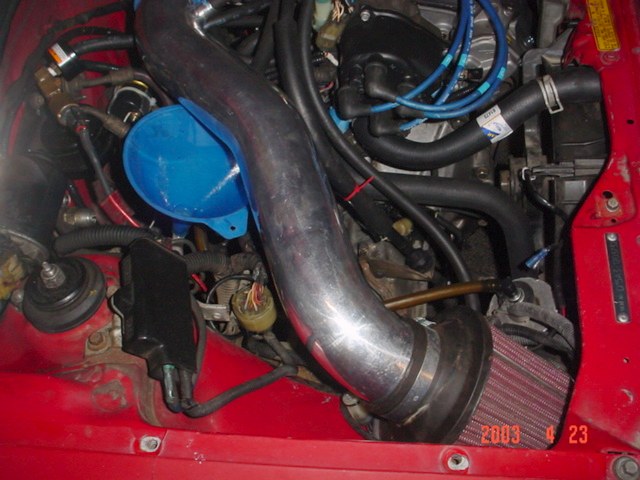
This is one part of the engine bay where I actually gained a lot of room. The CRX's emissions control box was in this spot before, but now it is empty. By shimming the front mount (see Swap Chapter 7), I was able to lower the engine enough to keep the timing belt cover from hitting the hood.
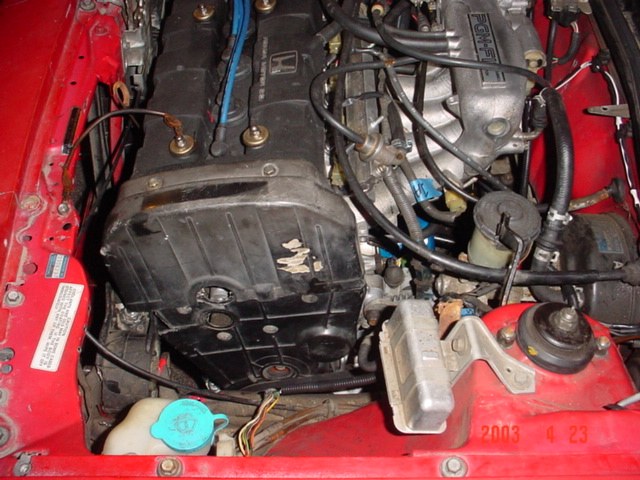
This was my crude attempt at a wheel alignment. It didn't work at all! I decided not to mess around and I took the car straight to the alignment shop. The toe was way off. After getting everything adjusted, the car drives very nice!

There is very little clearance in front of the exhaust manifold. This is where running the half-width Del Sol radiator really makes life easy. It would be almost impossible to get a turbocharger in there with the stock radiator.
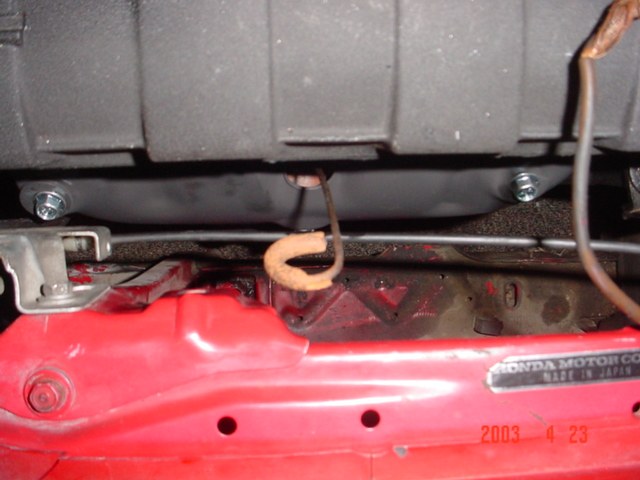
After 25 miles of break-in, I pulled the spark plugs. I kept the RPMs below 4000 and did not go full-throttle. I spent most of the trip cycling the engine between 2500 and 4000 RPM. The throttle response is excellent!
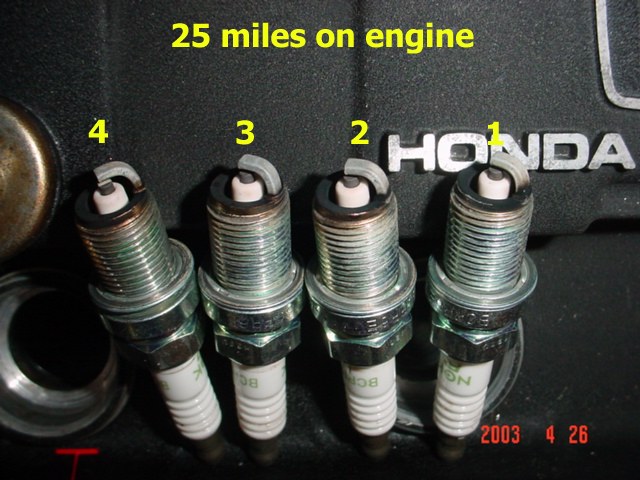
When I got home, I also checked the compression and was delighted to see the results. Different compression gauges will report different numbers on the same engine. My old 2000 Civic Si with 10.2:1 compression read 205 psi on every cylinder using this gauge. This engine has about 8.9:1 compression. 170 is a good number, but more importantly, the numbers are very consistent!
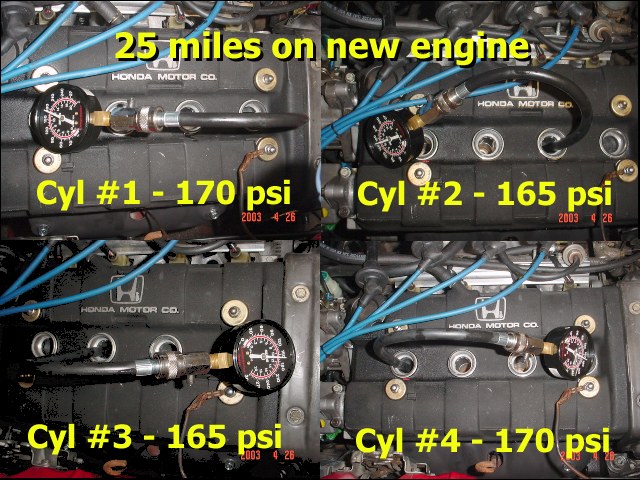
That's it for the swap, but there is much more to come...